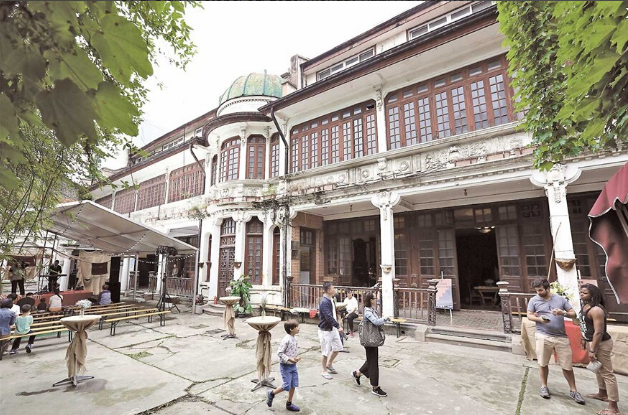- 中文
- EN
- Français
- 日本語
- 한국어
- 繁體中文
Creating A District-wide Museum Without Borders

Zhangyuan Garden, an old residential mansion, has been renovated into a popular destination for visitors. — Wang Rongjiang
WHEN some areas of Shanghai are building museums or theme parks, Jing’an has proposed a more radical vision: turn the whole district to a huge museum.
“Jing’an is a potted history of Shanghai,” said Zhang Zhong, deputy director of the Jing’an Cultural Bureau.
In the 1920s and 30s, the city was divided into an international settlement, the French Concession and a walled-off area for Chinese residents. Today’s Jing’an encompasses all that history.
Yang Jiguang, a director with the Culture and History Institute of the district, said every brick and every tree in Jing’an has a history to tell.
“We hope in the future there will be a museum and historical site every 50 to 100 meters,” he said.
Jing’an has more than 60 museums either built or on the drawing boards. They range from wartime and Communist Party memorials to industry and community museums. But the highlight of this new thrust will be what is called the “home museum.”
“We hope to mobilize people living in historical buildings and people who have great stories from the past to tell,” said Qian Wei, Yang’s deputy.
The widow of the famous bass singer Wen Kezheng has decided to open her home as a music museum, Yang said, but it’s a challenge for such private museums to survive.
“Private museums in foreign countries always run well. Why? Because they receive support from government, not only financially but also administratively,” Yang said.
He said a professional commission will be established to make regulations and devise incentives.
The Oriental Danology Institute, for example, is proposing to revamp itself into a “home museum.”
In May, the institute organized a series of cultural events featuring the work of Chilean artists in the historic Zhangyuan Garden, a shikumen community. It’s a chance for local residents to show the public about how life in Shanghai’s famed lanes and alleyways once thrived.
“Both ancient Chinese and Chileans used tied knots,” said co-founder Li Jingjing. “Taking that concept, we are asking residents to hang traditional items of daily use, like buckets, on ropes, together with Chilean knots that link buildings.”
She added that many of the people who live in Zhangyuan have strong memories of their childhood and are happy to discuss them with visitors.
“If old buildings are well maintained, the memories will be retained,” Li said. “But if the old shikumen are pulled down, the past will gradually be forgotten.”
In Jing’an, many historical buildings are hardly known. Some have haphazard exhibitions marking the past and notable former residents.
These historical fingerposts need to be upgraded, according to Zhang.
Among the areas waiting for upgrading is Shaanxi Road N., which features 46 old buildings and 19 former residences of famous people.
Zhang Renren, an urban planning researcher from Tongji University, said there are logistical problems, like walkways too narrow for visitors and walled enclosures around historic sites.
“We can pull down the walls, allowing visitors to enjoy beautiful gardens,” she said. “We can plant more greenery and build sidewalk cafes.”
The district is seeking help from the business sector for its “home museum” vision. “We don’t have enough government funding, so we need donations from other sources,” Qian said.
In 2011, Prada rented the former residence of Rong Zongjing, scion of a renowned tycoon family. Also called Rong Villa, it is a grand garden villa tucked away near the intersection of Nanjing and Shaanxi roads.
According to Qian, Prada offers a good example of corporate contribution.
The project involves three years of research, including ideas of how to combine Prada culture with the history of the villa and the Rong family.
“There are many former residences of notable people, and most of them are just tarted up for tourists,” Qian said. “We want to go beyond that.”
When workers were peeling off some paneling from walls in the Rong villa, they found a newspaper from the 1940s and a secret family safety box.
“These are elements of life as it was, and we want them preserved,” Qian said.
Yang said Prada won’t inject commercialism into the villa restoration. Its flagship store in Plaza 66 is just across the street.



